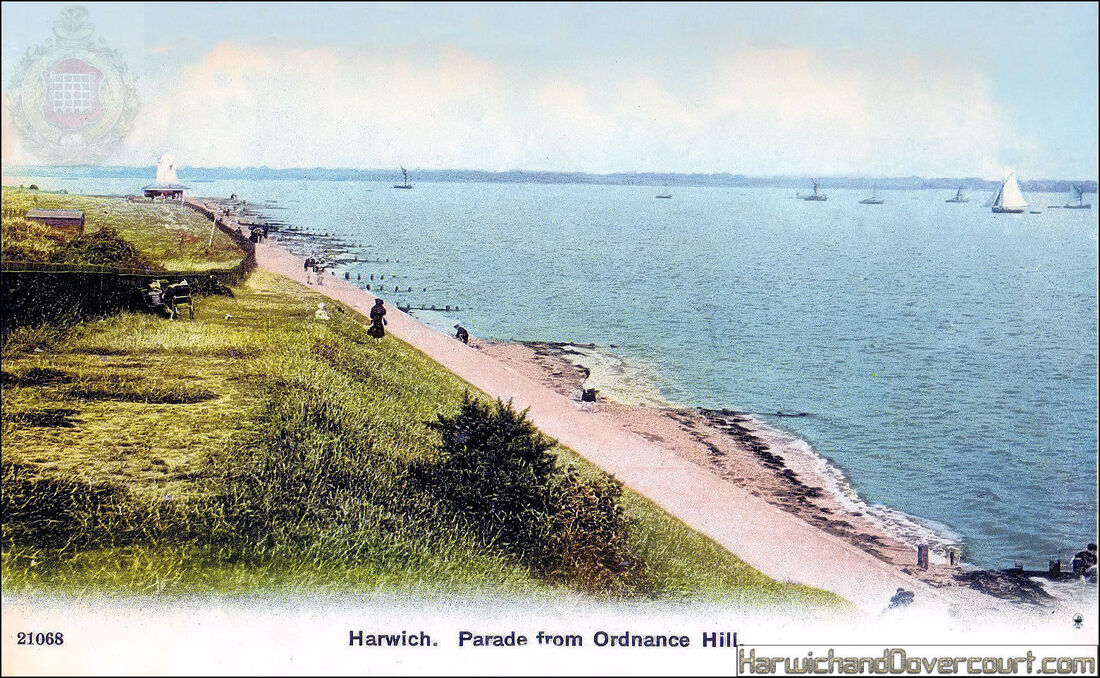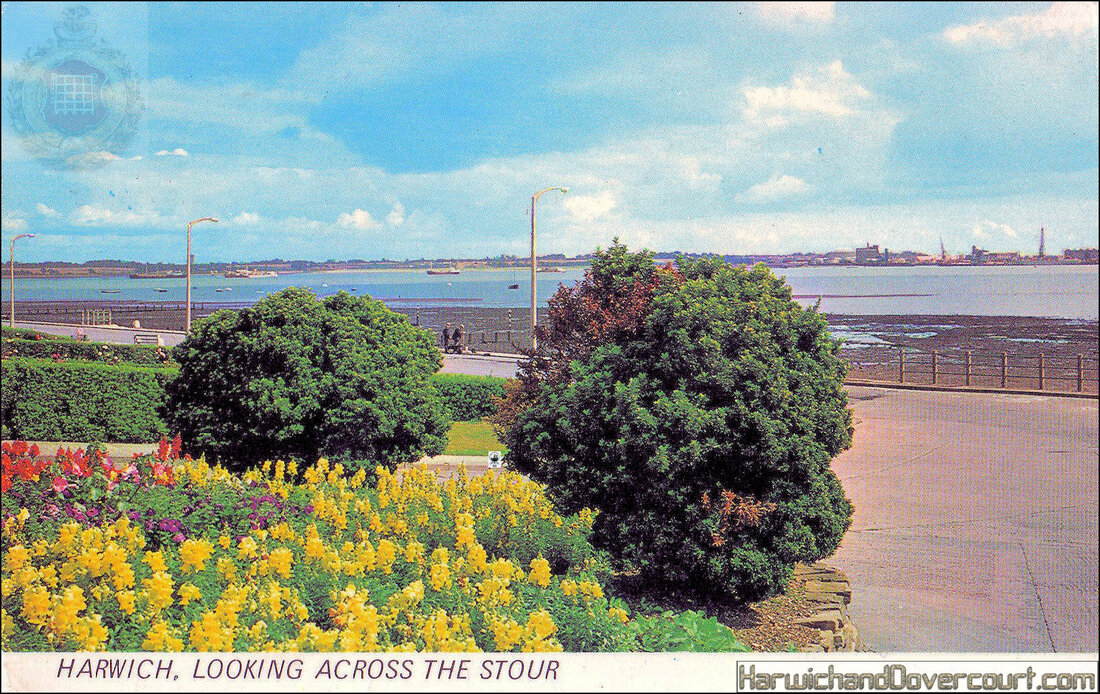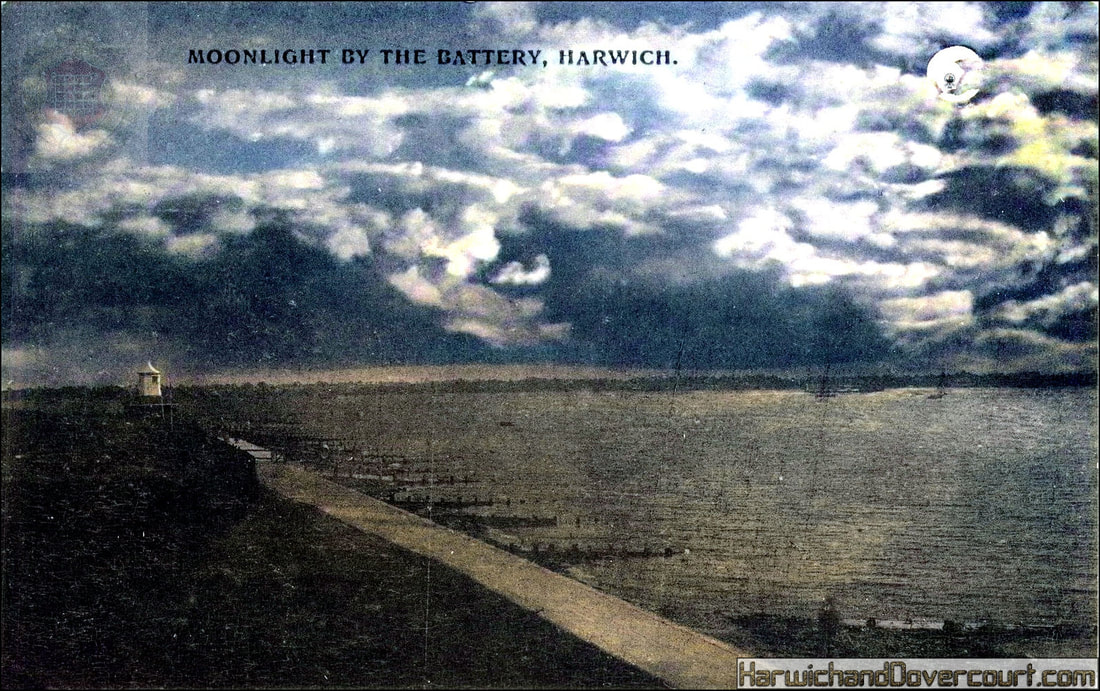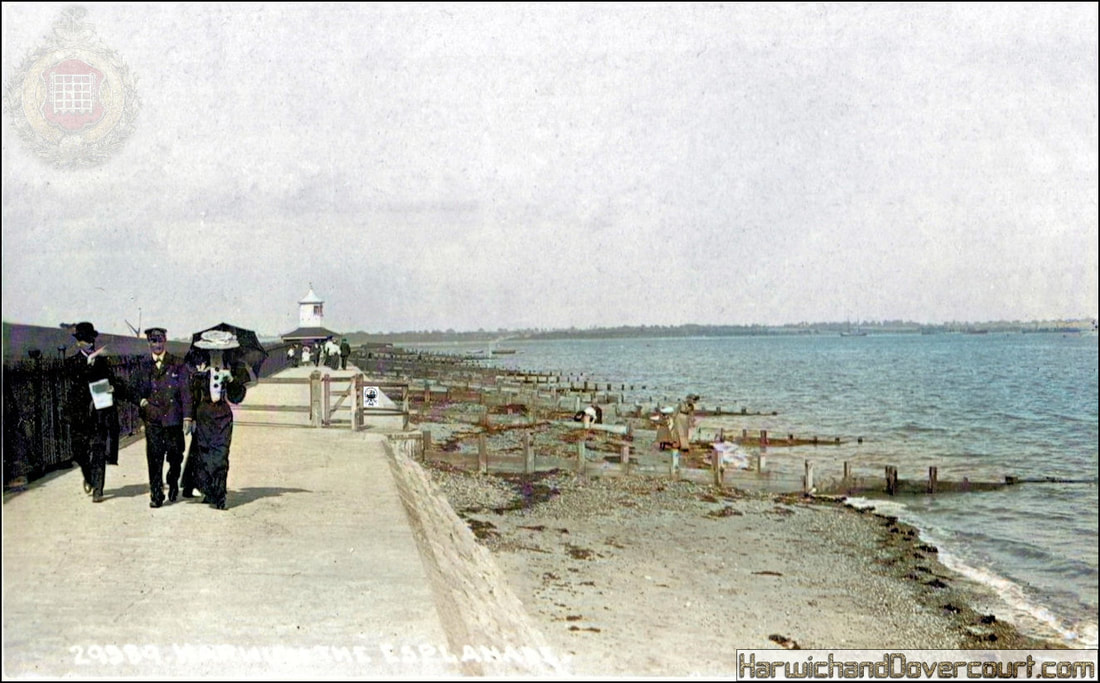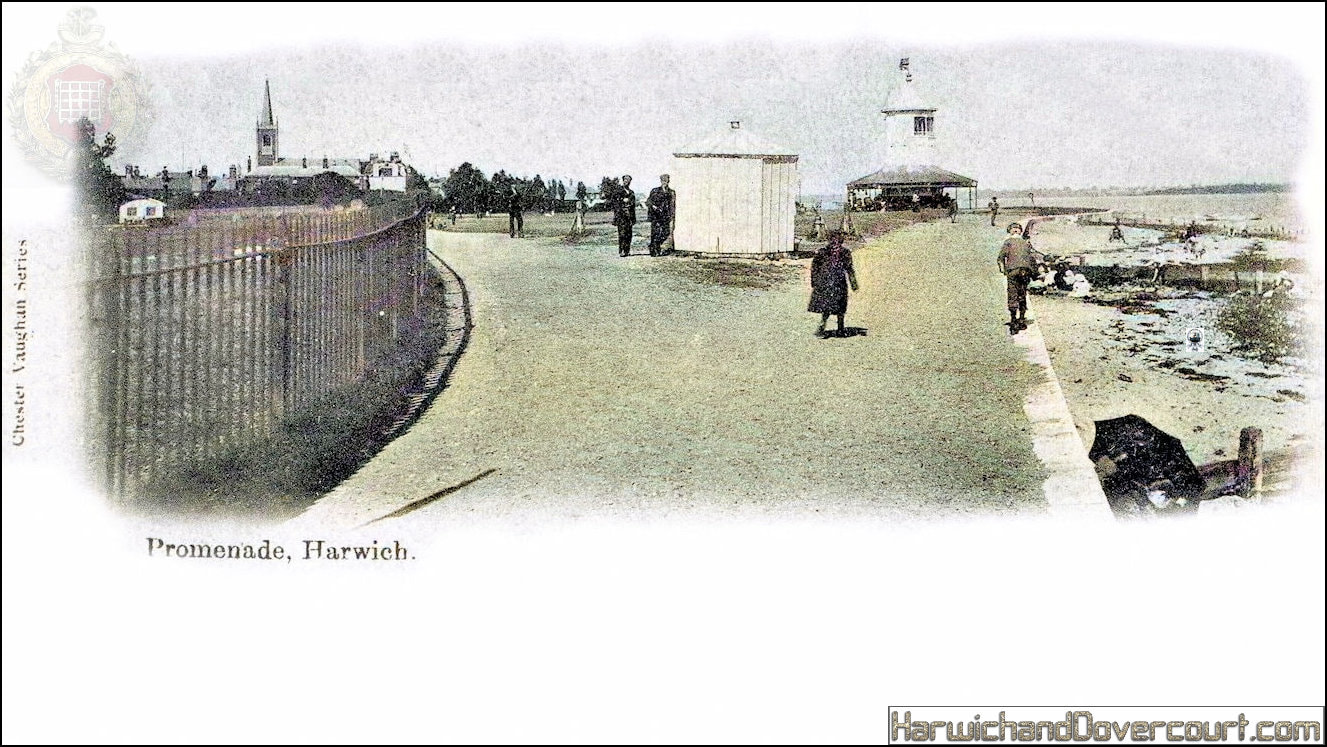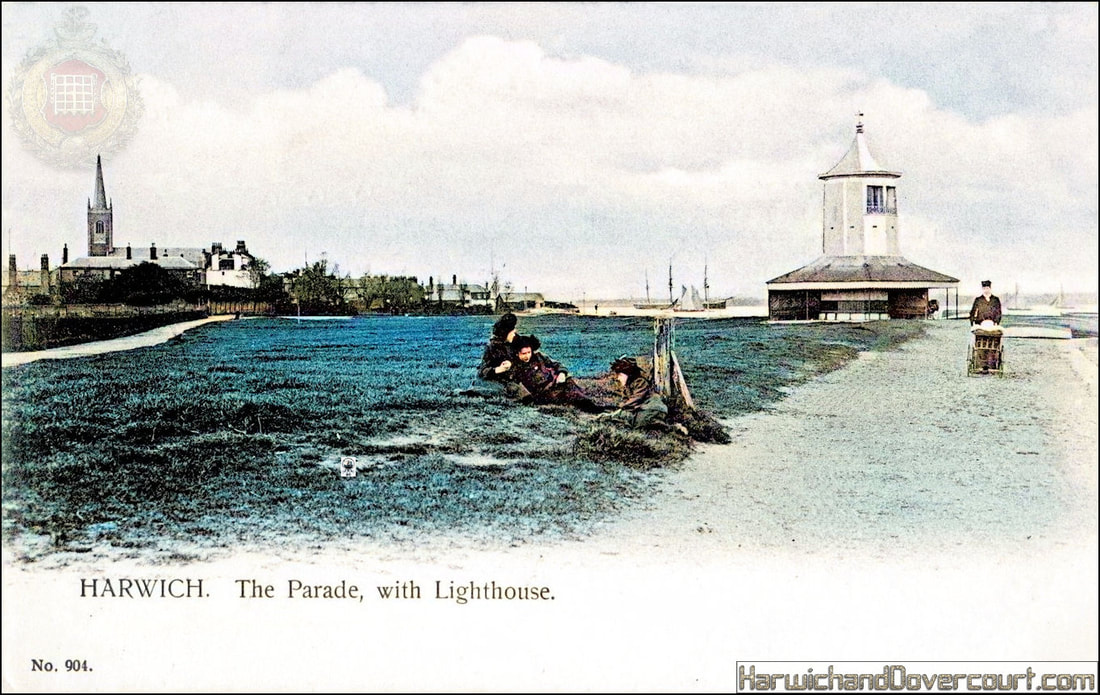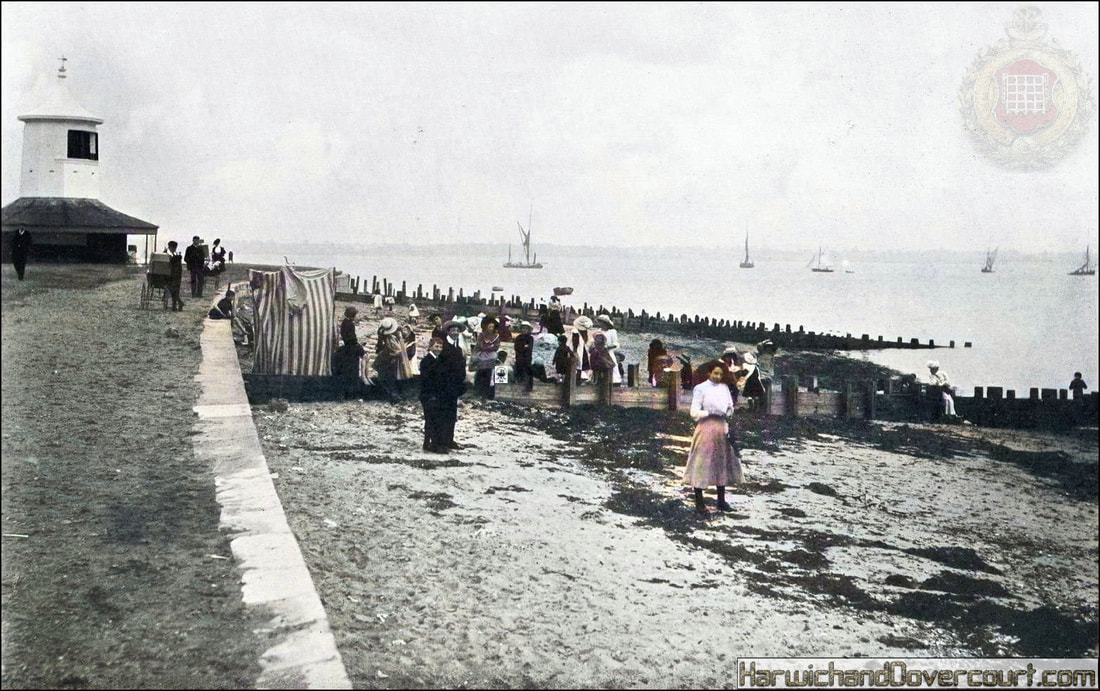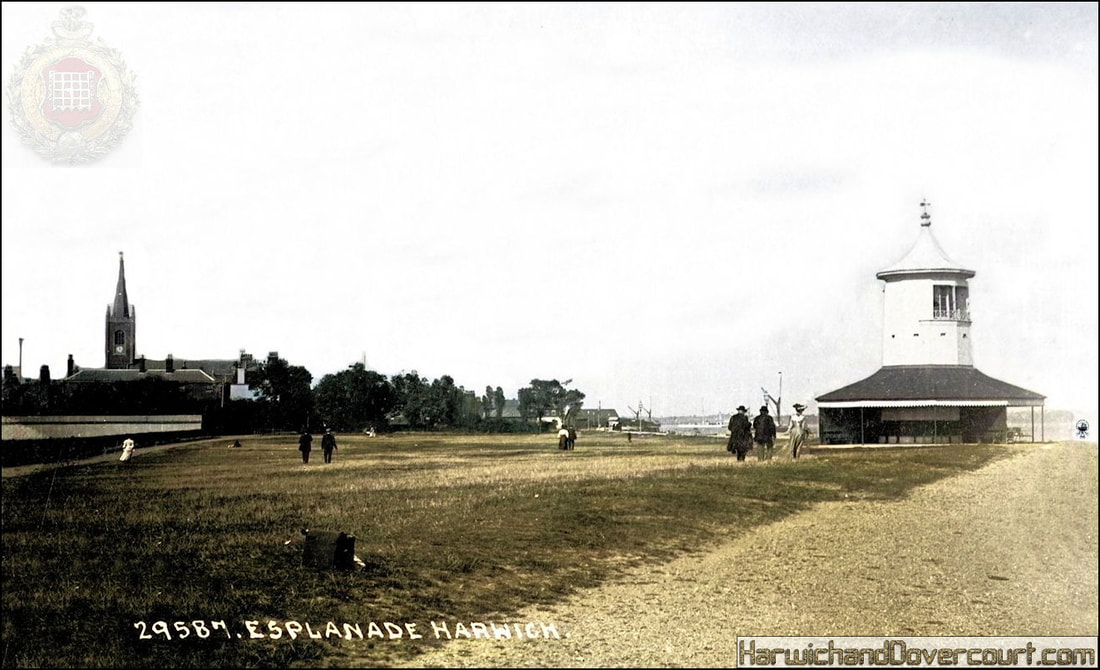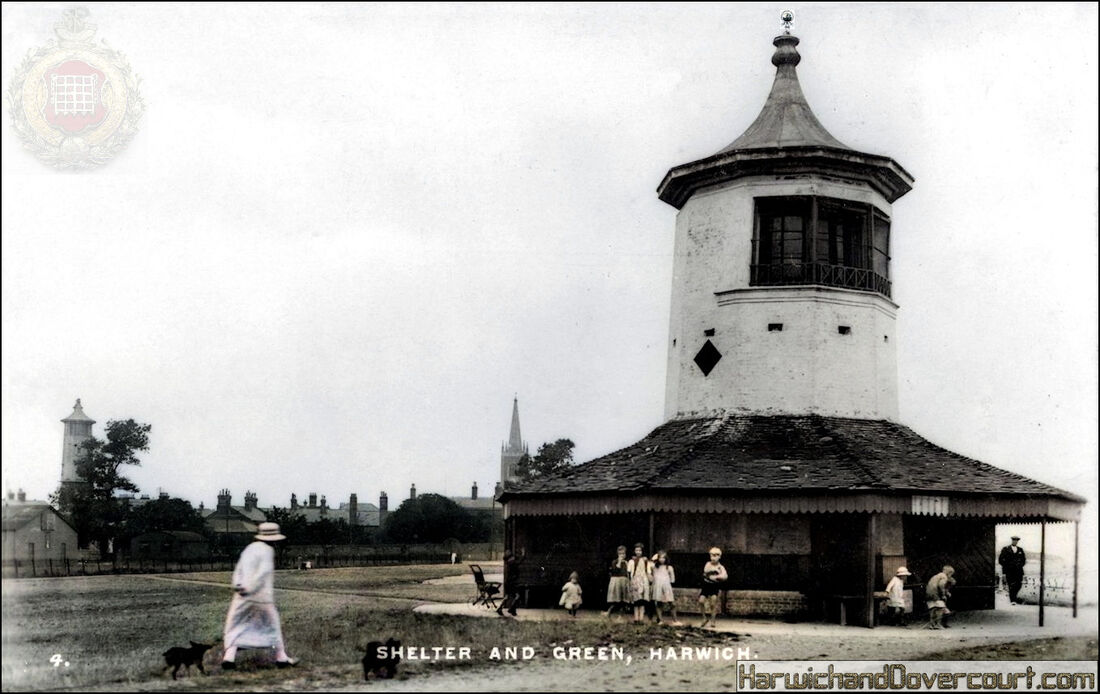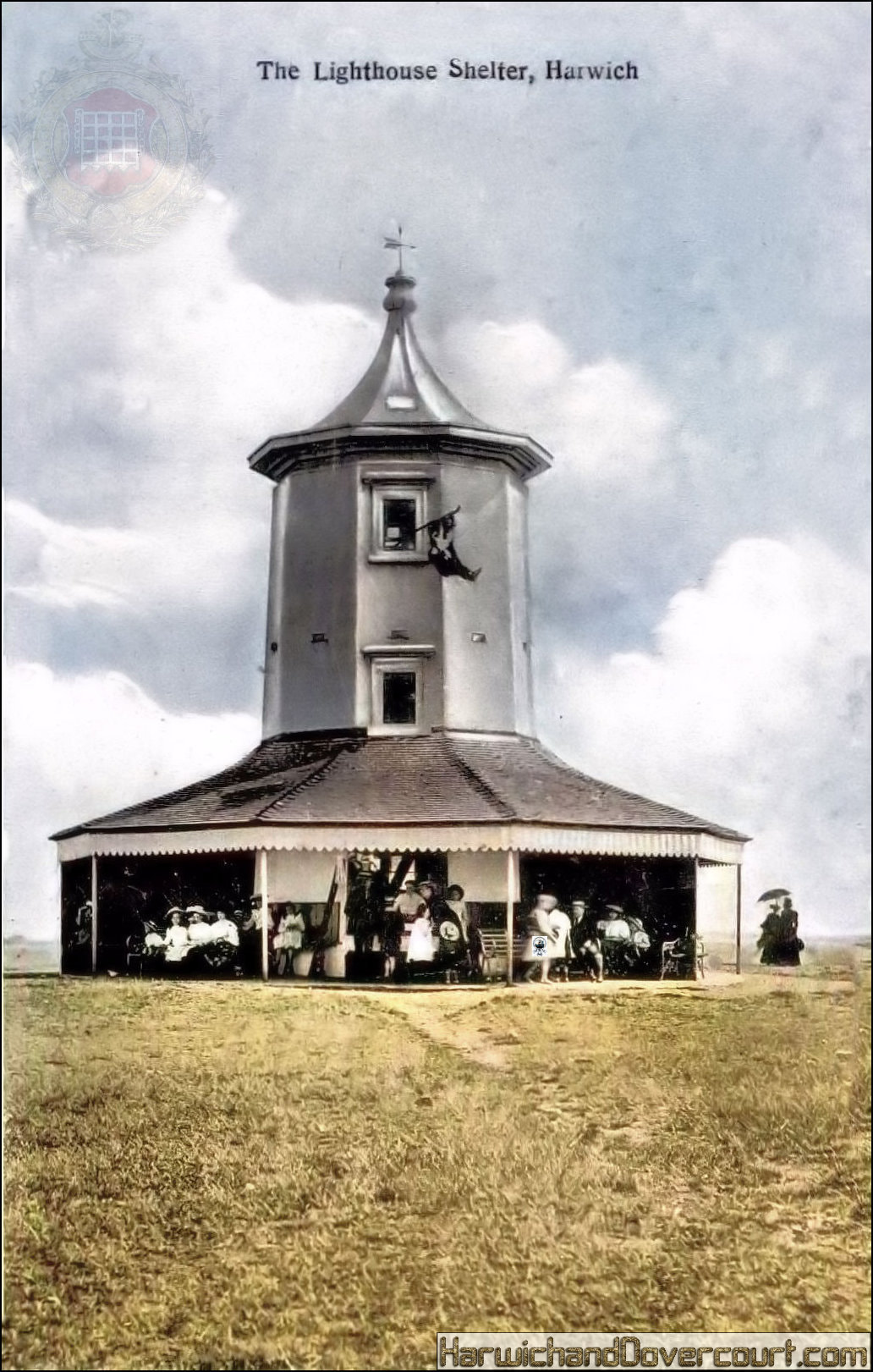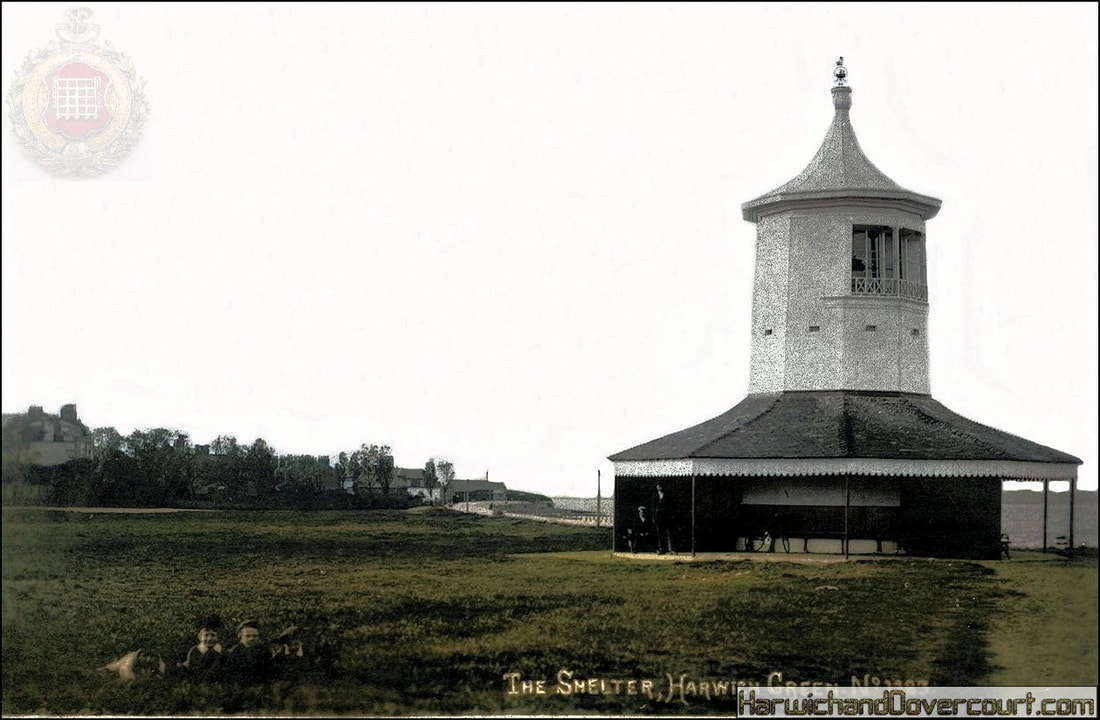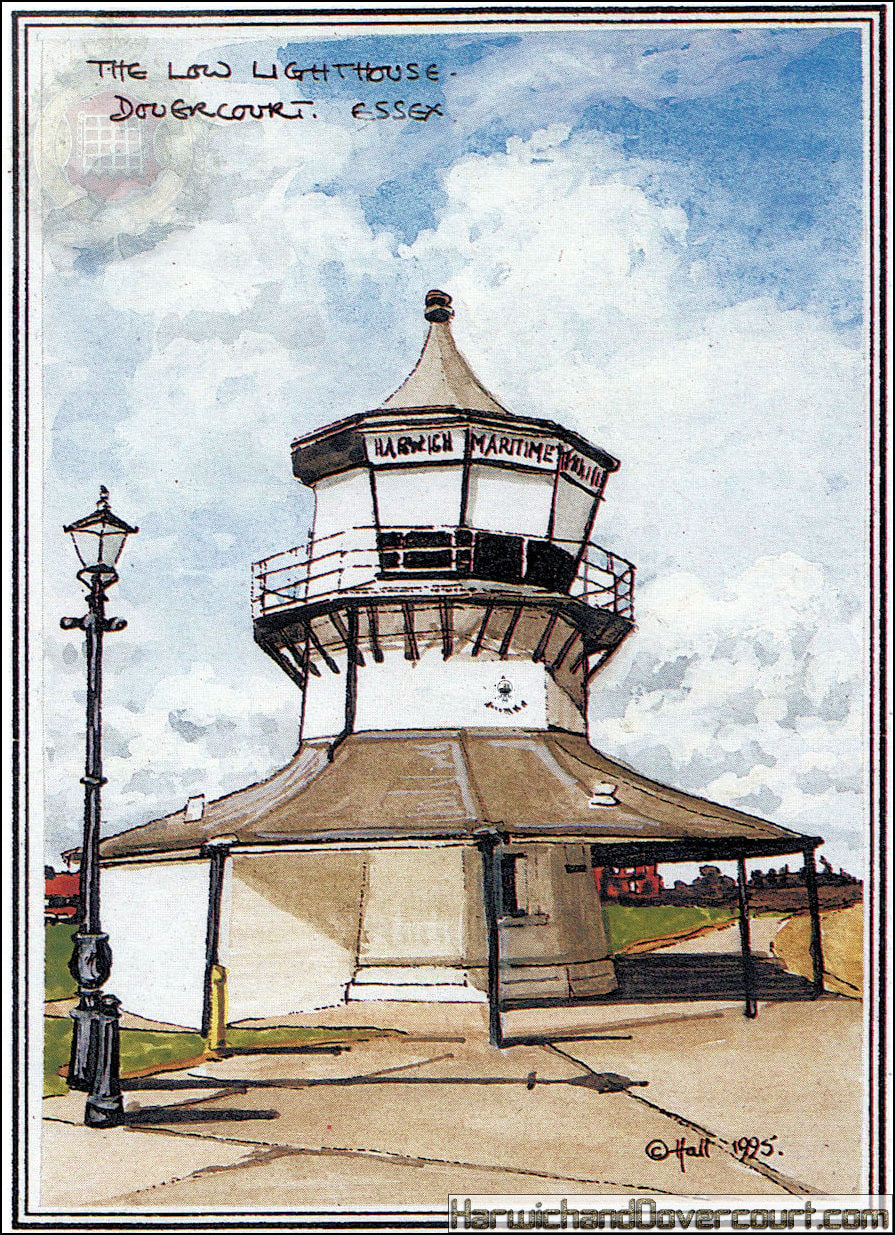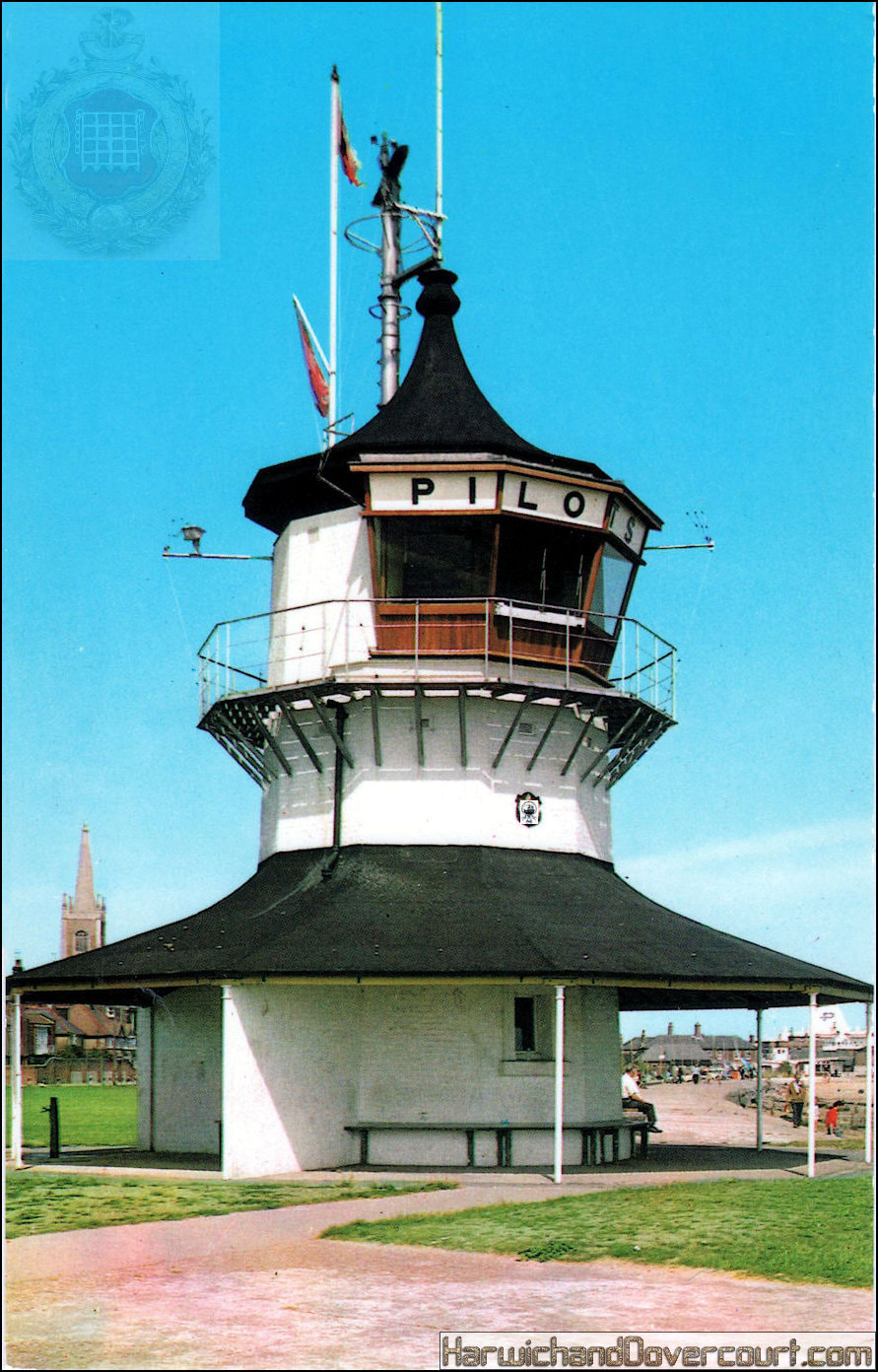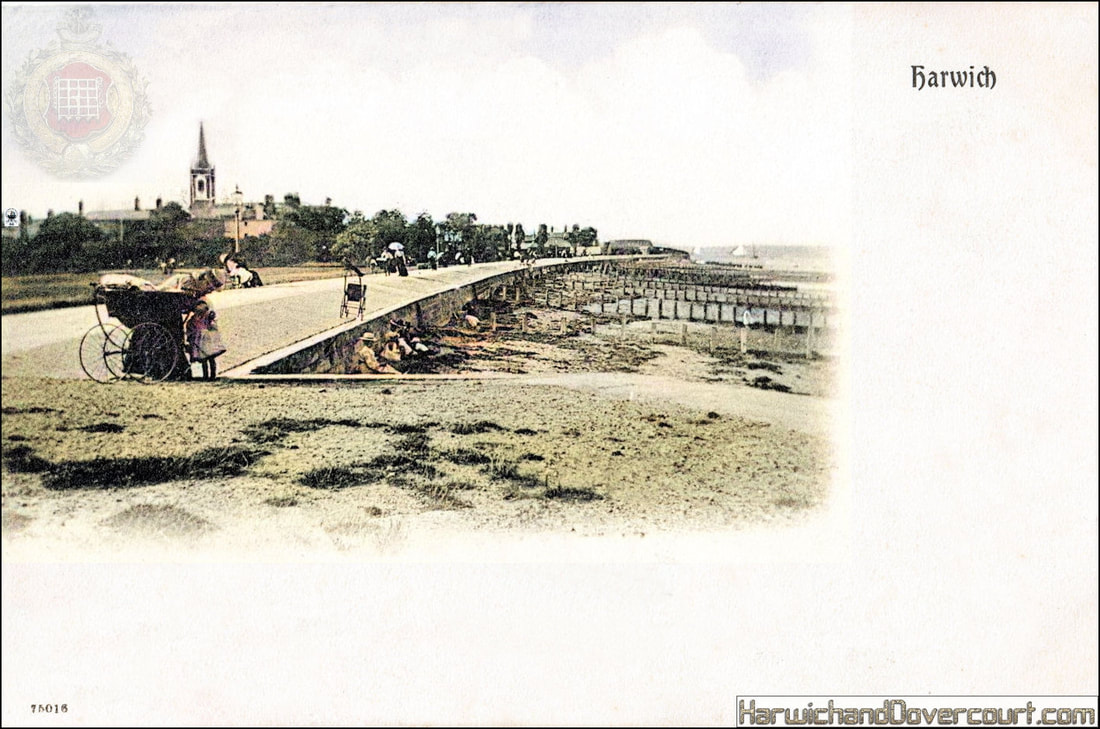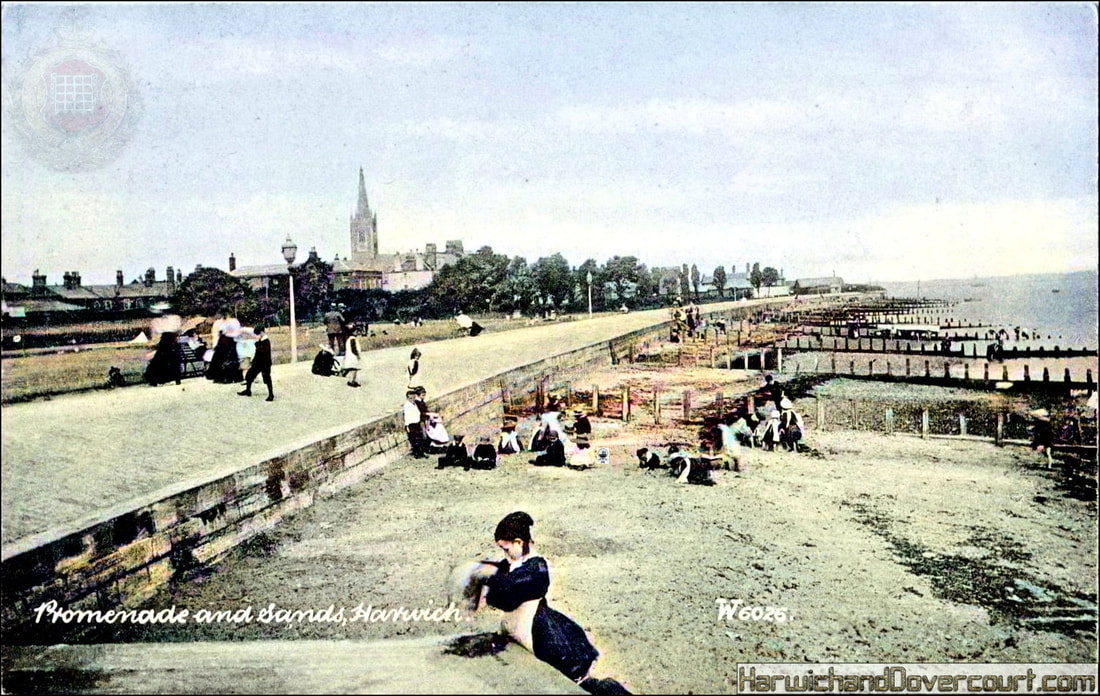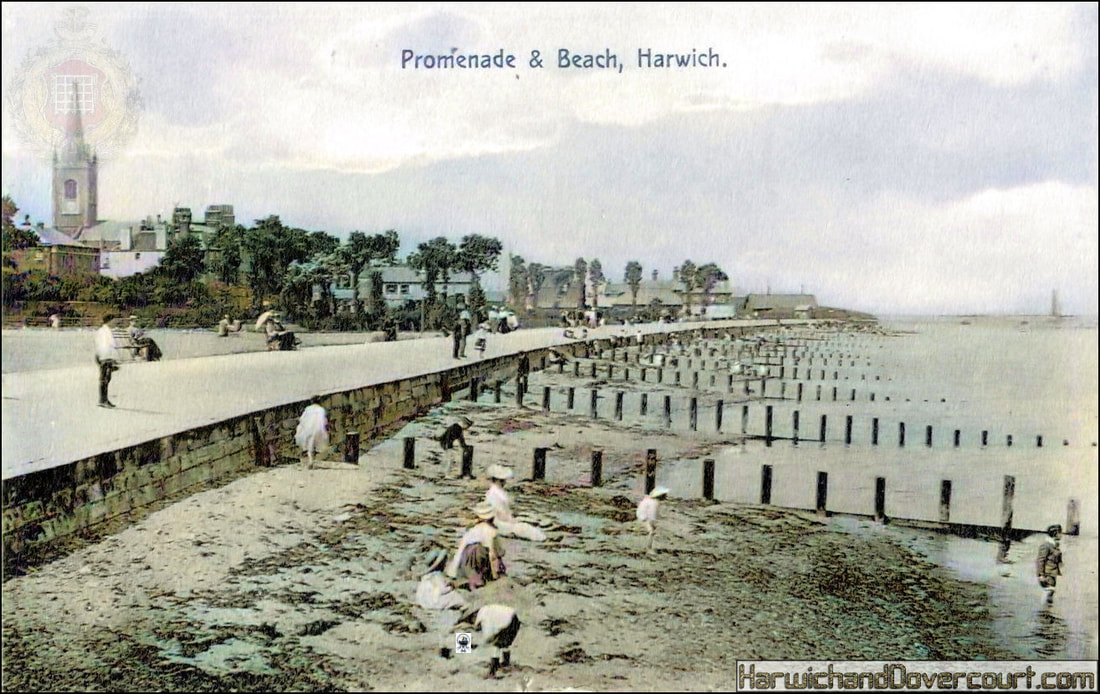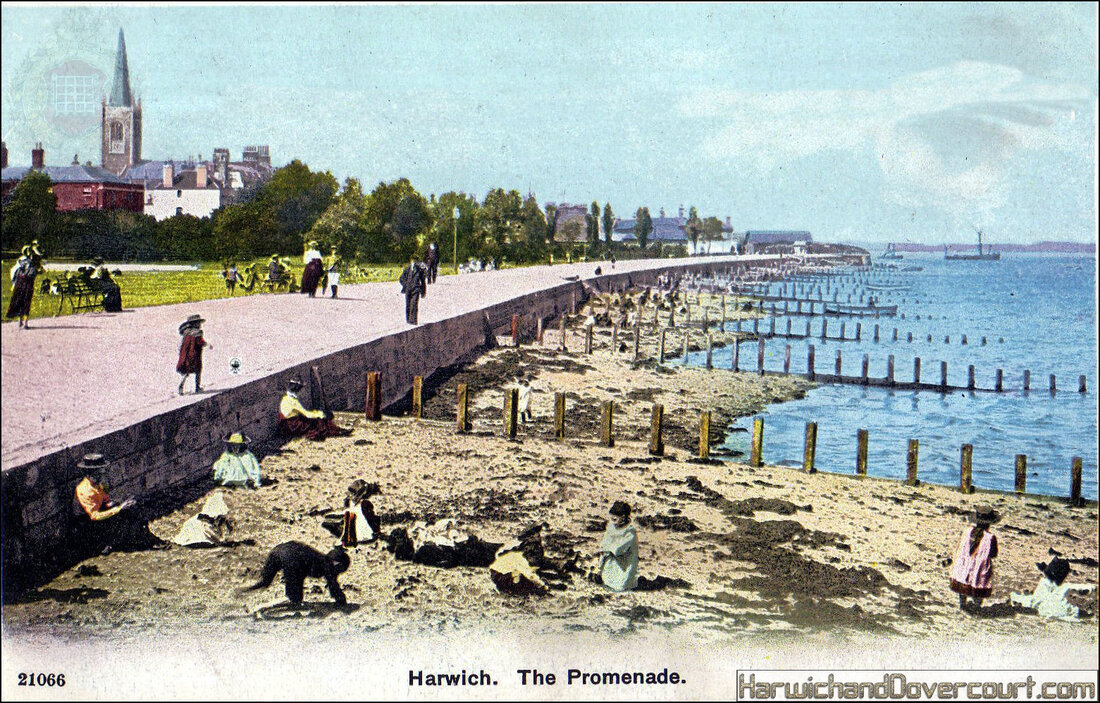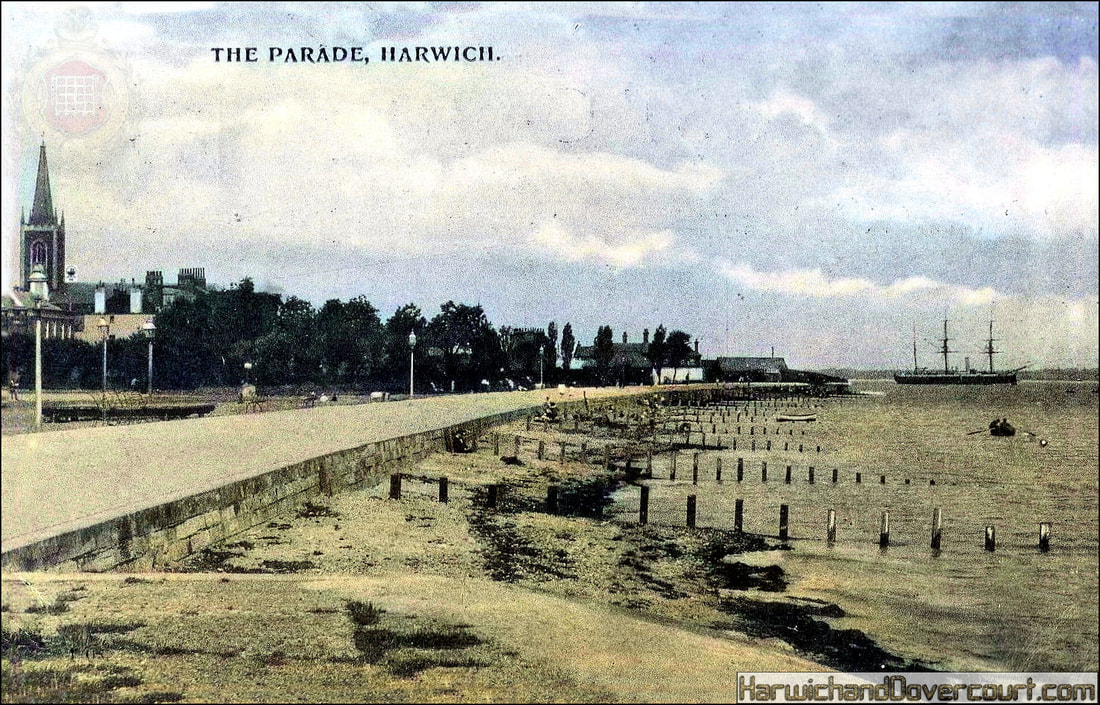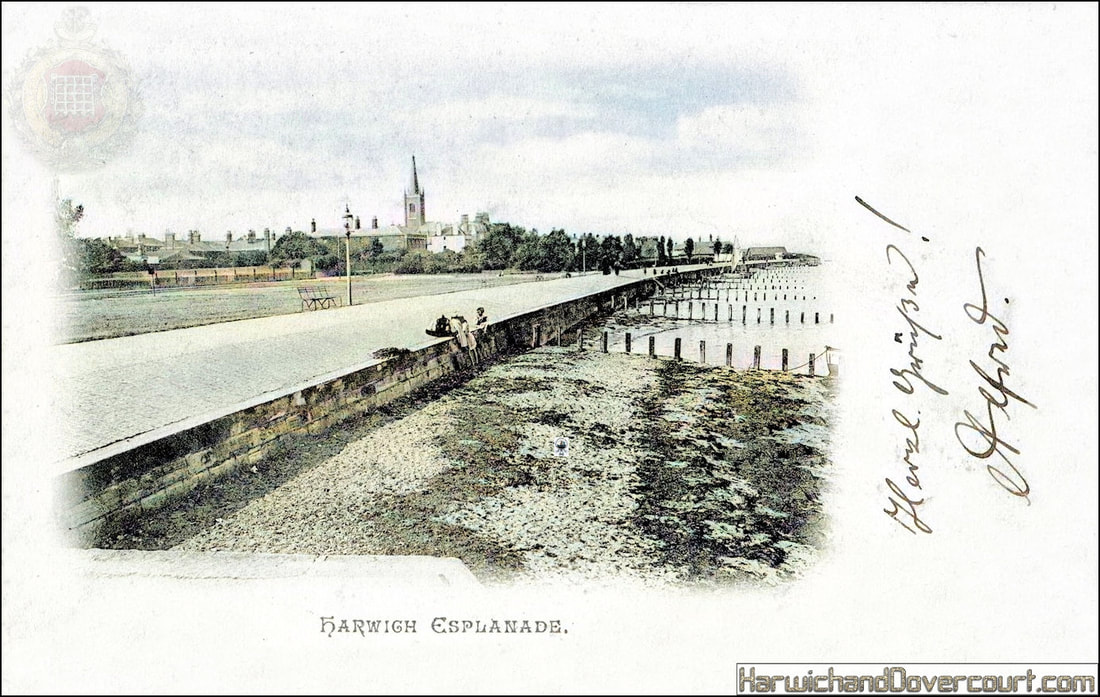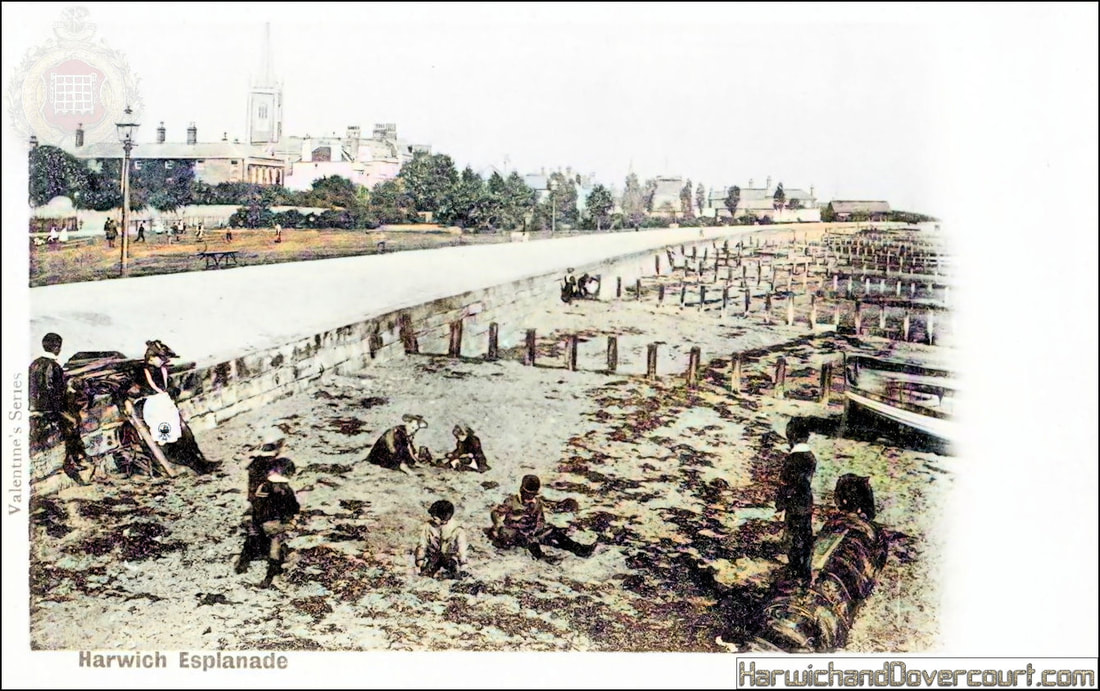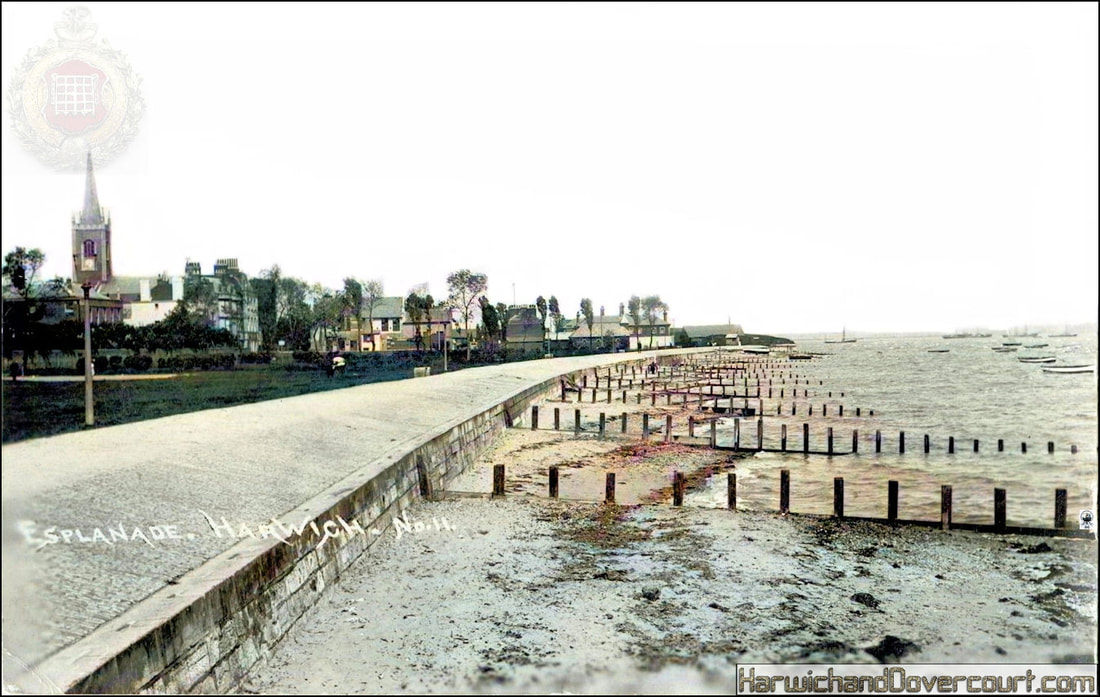Starting Off from the West End Beach
01 21068 Harwich, Parade from Ordnance Hill (1908) H&D FW
02 Harwich, Looking across the Stour (1970) FW
03 R117682 Moonlight by the Battery. Harwich (1910) H&D FW
04 29589, Harwich, The Esplanade. (1907) Bell's Publishing FW
05 Promenade, Harwich (1903) H&D FW
06 The Parade, with Lighthouse Harwich No. 904 M FW
07 Beach & Esplanade, Harwich (1910) H&D FW
08 29587, Esplanade Harwich. (1913) Bell's Publishing FW
09a #4 Shelter and Green, Harwich (1937) Tuck's Publishing.
#4 Shelter and Green, Harwich (1937) Tuck's Publishing.
The Low Lighthouse, is a Grade II Listed Building, was constructed in 1818 as one of a pair providing leading lights for the safe approach to Harwich Harbour. The two lighthouses were commissioned by General Rebow and built by John Rennie the Elder, who was held in high esteem for his work on numerous dockyards, harbours, bridges and canals. As with all lighthouses, the Harwich Lights came under the direct control of Trinity House following an Act of 1836. The Merchant Shipping Act of 1854 transferred the authority for all coastal lights to the Board of Trade, with Trinity House responsible for the administration of those in England and Wales.
Shifting sand banks in the harbour approaches rendered the Harwich Lights increasingly hazardous to navigate by toward the middle of the 19th century, (when they became known as the `misleading lights') and in 1863 they were replaced by new leading lights set on prefabricated iron frameworks at Dovercourt. By this time the Low Lighthouse had become a favourite landmark along the route used for seafront constitutionals. The canopy around the lower section of the tower was added in the late 19th century to provide walkers with shelter. The low pitched roof is felt over rafters and boards, supported on iron posts and compartmentalised to the rear with radiating brick walls. The lighthouse remained the property of Trinity House and developed from a lookout point to a pilot station in the years after World War II. The balcony, lamp room windows and most of the internal fittings date from this period. In the early 1980's, in response to the increasing traffic at the ports of Felixstowe and Parkeston Quay, the pilot station was removed to a new purpose built structure further up the peninsula. The lighthouse was relinquished by Trinity House, passed into the care of Tendring District Council and was adapted by the Harwich Society to serve as a Maritime Museum. Brick walls which enclose the canopy on the landward side were subsequently added by the Society to increase storage and display areas. The modern brick walls and iron doorway added by the Harwich Society, all plumbing and electrical systems and all display items, cases and boards are excluded from the scheduling, although the ground beneath and the structures to which these features are attached are included.
